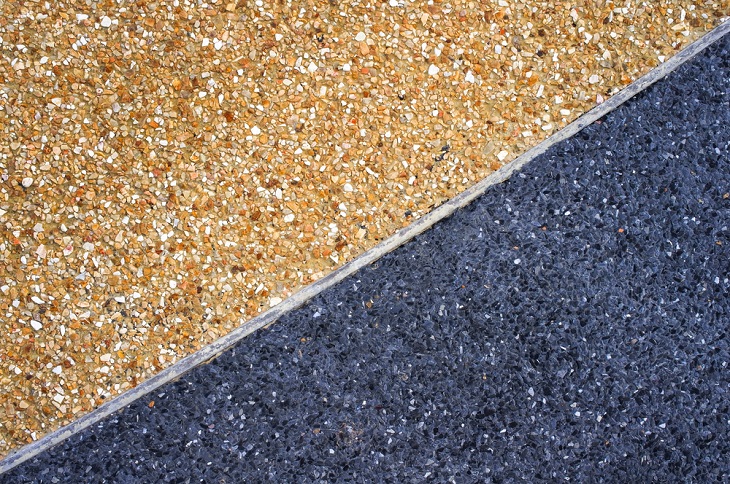Exposed-aggregate concrete can be compared to even marble or granite. We can see an even, typical surface which has been exposed to divulge the outstanding splendor lying underneath. In a case of concrete, that splendor is in the type of ornamental aggregate, either manufactured or natural. The enhancing procedure of exposing-aggregate concrete has been around from the early 1900s, prior to stenciling, pattern stamping, and decorative overlays. However, this approach is far from dying out. The finish of exposed aggregate provides a number of benefits. Most of today's suppliers are discovering creative methods to bring exposed-aggregate to a whole new level.
Things to Know About Exposed Aggregate Concrete
 |
| Exposed Aggregate |
At the time of placing sidewalks, driveways, or patios, different people employ variants of concrete, gravel, or asphalt. There is a huge range of designs to pick from, however, the most vital factor of the entire procedure is the finishing. Exposed aggregate concrete is considered as one of the most famous types of finishing. However, to recognize it better, we need to know exactly how concrete works.
Knowing Concrete
Basically, concrete is a combination of cement, sand, and water. The composition and balance of these individual elements typically differ from one kind of job to the next and changes can be made when particular situations so dictate. As soon as you have all the elements in their required proportion, it’s time to pour the concrete. After procedures, for example, washing, flattening, and bull floating, the ultimate surface is seen, and this is what is called as exposed aggregate concrete.
Where Can Exposed-Aggregate Be Used?
We can get an exposed aggregate surface by laying concrete and then eliminating the external covering of cement mix to expose the decorative coarse aggregate. Due to its skid resistance and durability, an exposed aggregate surface is best for most flatwork especially:
 |
| Exposed Aggregate Finish |
- Patios: Patios are the external area of the house and make wonderful sitting areas. Most of the people love this kind of aggregate as it gives a smooth surface when the washing process has been completed.
- Driveways: Driveways are typically very hard, plus they need a finish which is stable and strong enough to withstand the test of time. Exposed-aggregate concrete is the best way to complete a driveway. If the correct trowelling is done, the fallout is typically a piece of construction durable against mechanical pressure and other elements.
- Sidewalks: Smooth roads and sidewalks are a major factor in road-systems. Exposed-aggregate concrete is placed and alleviated on both sides of the road to give a comfortable walking area for the pedestrian. Mostly the surface is smooth; however, the finish is strong enough to make sure it is solid when it's rainy or snowy and thus slippery. The idea of exposed aggregate is also found applicable in the plan of retaining walls, facades, sound barrier walls, and plazas.
Why Exposed Aggregate is Popular?
Exposed aggregate is a method of ornamental concrete where the cement aggregates, primarily small stones and pebbles, are exposed or revealed in contradiction to the conventional smooth surfaces of concrete finish. They contribute to the visual significance of the finish due to its varied colors and random designs. It is a good way to provide new or old concrete with a tempting look. In addition to affordable cost and looks, exposed aggregate also provides the leading features of concrete which are strength. All these things make this alternative hugely famous. Since it is extremely hardy, a few regular usages of exposed aggregate are civic areas which include footpaths and major traffic areas like pool decks, plazas, patios, sidewalks, or driveways.

0 comments :
Post a Comment